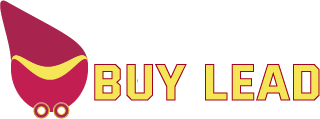Many developers start their careers unsure of which frameworks to specialize in. Even when they might have decided on a programming language, the constant new releases of exciting new frameworks and updates to existing ones constantly hitting the market make the decision challenging. But choosing the right framework is essential for a developer’s career growth.
One framework many developers choose to learn or work with at some point in their careers is Laravel. Although originally released over a decade ago, Laravel is still thriving with updates.
What is Laravel?
At its core, Laravel is an open-source PHP framework designed to help developers create web apps more easily through a wealth country wise email marketing list of built-in features. Originally released in 2011, creator Taylor Otwell began its development to provide an alternative to the existing Codeigniter framework. Since then, Laravel has gone through 8 different versions with smaller updates released on a more regular basis.
Laravel is a server-side PHP framework. This means developers have the ability to build full-stack applications with features that typically require a backend, including exports, accounts, and order management.
Why Do Developers Use Laravel?
Developers choose to widely use Laravel for a variety of different reasons, but mainly because of the following features:
- Modular packaging system with dependency management – This allows developers to easily add functionalities to their Laravel-based applications without needing to write them from scratch. Developers have the ability to create their own code packages for routine use or utilize ready-to-use packages.
- Complete authentication system
- Object-relational mapping – The Eloquent ORM included with Laravel uses classes in the database tables to allow for easier data access and manipulation.
- Automated testing
- Command-line interface with many pre-built commands
- Portable virtual development environment
New Features of Laravel 8
The latest release of the Laravel download a free selection of tools for calculating framework is Laravel 8. Originally released in late 2020, developers have had a bit of time to play with the new version and gather their thoughts on whether or not this release was worth the wait.
The new features of Laravel 8 include:
1. Laravel Jetstream
Jetstream comes “out of the box” with many helpful features such as login, registration, email verification, session tracking, two-factor authentication, and team management. When it comes to scaffolding, Jetstream offers 2 options: Inertia and Livewire.
Livewire relieves developers from having to use a JavaScript framework (such as Vue.js) as it offers a responsive and dynamic library. Utilizing the Blade templating language, Livewire also gives devs a choice between leaving Blade and using Vue.js if so inclined. Inertia utilizes Vue.js as its templating language and offers the full power of the framework without the requirement of client-side routing.
2. Model Factory Classes and Models Directory
With the release of Laravel 8, eloquent model factories are now based on class. This helps give improved support for relationships between factories.
With this, devs have the ability to manage object states by using simple methods typically calling the state() method (given in the Laravel base factory class). This takes an argument as a function while taking in an array of attributes assigned to the factory.
The application skeleton of Laravel 8 includes an app/Models directory as well. While all generator commands assume that models exist, if the directory at hand doesn’t actually exist, the framework assumes the application keeps models within the app/ folder.
3. Removed the Namespace Prefix of Controllers
In earlier Laravel versions, developers india number list had the ability to use a property called $namespace to automatically prefix the controller’s namespace by applying App/Http/Controllers. Laravel previously sometimes doubled the namespace prefixes when using callable syntax in the web.php route’s code.
